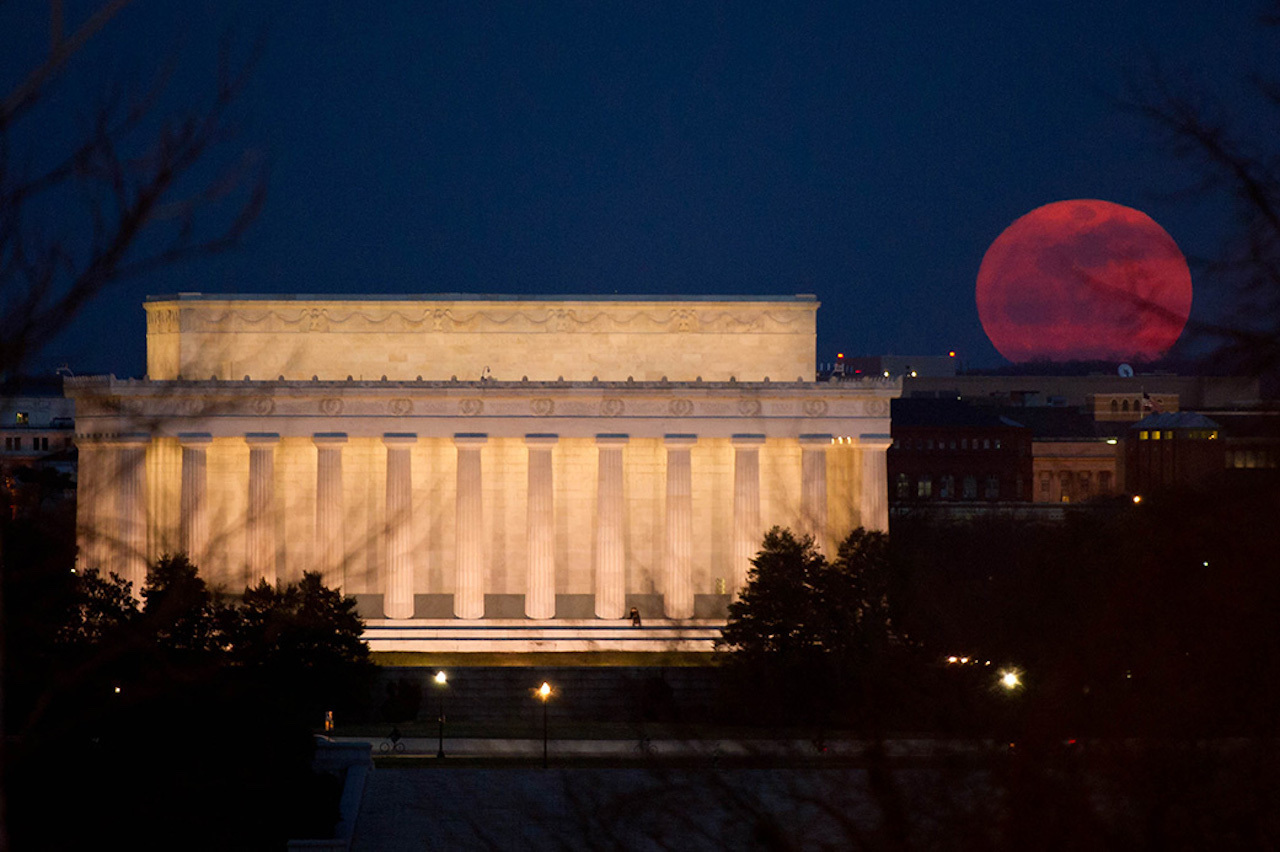News | August 9, 2018
10 Things: Moon Photography Tips

Capturing the Moon with a camera is one of the most satisfying—and challenging—projects available to an outdoor photographer. Here are some suggestions for making the most of a moonlit night with your camera.
1. Planning is key
There's nothing wrong with grabbing a spontaneous shot if you see a beautiful Moon. But if you want to increase your odds of making a truly memorable photo, there are some ways to make your own luck.
Scout out a good shooting location during daylight hours. Practice using your camera's controls in advance. Give yourself plenty of time to set up.
Bill Ingalls is NASA’s senior photographer, and has traveled all over the world for more than 25 years photographing events for NASA. Ingalls, who is based at NASA headquarters in Washington DC, goes to great lengths to scout out the perfect vantage point to juxtapose the Moon with various Washington monuments.
“It means doing a lot of homework," Ingalls said. "I use Google Maps and other apps—even a compass—to plan where to get just the right angle at the right time.” He often scouts locations a day or more in advance, getting permission to access rooftops or traveling to remote areas to avoid light pollution.
2. Know where and when to look for the Moon
One of the most important parts of planning is to know when the Moon rises and sets on a given day, and its current phase. Using NASA resources, you can see the Moon's exact phase down to the hour, generate a calendar of sky events including full moons, and even make your own handy Moon phase calendar. There are also a number of commercial apps available for your computer or smart phone that can help you predict exactly when, where and how the Moon will make an appearance.
3. Include people or objects in the shot
Ingalls' tip for capturing that great lunar photo is: don’t make the mistake of photographing the Moon by itself with no reference to anything.
He said, "I’ve certainly done it myself, but everyone will get that shot. Instead, think of how to make the image creative—that means tying it into some land-based object. It can be a local landmark or anything to give your photo a sense of place.”
Even without a famous landmark nearby, trees, mountains, streetlights and even just clouds in the sky can all add visual interest to an image.
4. Use a tripod whenever possible
You'll make sharper images if you can minimize any camera shaking. The easiest way to do that is by mounting the camera on a sturdy tripod. To take it a step further, using your camera's self-timer will eliminate any shaking from pressing the shutter button. A shutter release cable eliminates the need to touch the camera at all. If your camera has Wi-Fi capabilities, you might be able to activate the shutter from a mobile device.
5. To capture details on the Moon itself, adjust your camera settings for daylight
Since most Moon shots are taken at night, it might seem intuitive to adjust your camera for low-light conditions. But if you want to photograph the Moon itself and its features clearly, remember this: moonlight is just reflected sunlight. In fact, it's often pretty bright reflected sunlight, depending on the Moon's phase. Set your camera's white balance for daylight, and try a fast shutter speed with a smaller aperture.
Of course, if you're shooting both the Moon in the sky and the landscape below, exposure gets much more tricky. Planning and experimentation will be your friends.
6. Zoom in
The Moon often looks much bigger to the eye than it does in photographs. In order to avoid having it look like a tiny white dot, it's important to zoom in on the Moon as tightly as your equipment will allow, especially if you're using a smartphone camera.
7. Take inspiration from other photographers
Take a look at our gallery of Moon photos, this searchable image gallery, or NASA's official Flickr stream for ideas and inspiration.
8. Make a Moon photo safari into a family activity
Especially if there is a supermoon, eclipse, or other special celestial event, a Moon photography expedition makes for a memorable outing.
“I think this would be a lot of fun to do with kids, if nothing else, to just have them witness it and talk about what’s taking place,” said Ingalls. He recommends personalizing the experience by using people in the shot. “There are lots of great photos of people appearing to be holding the Moon in their hand and that kind of thing. You can get really creative with it,” he said.
9. Experiment
The Moon isn't only visible at night. Try a daylight shot.
Experiment with shooting the Moon during different phases. A full Moon is beautiful and extremely bright, but also quite flat. During other phases, the lengthening shadows cast by mountains and craters on the lunar surface make for interesting, complex moonscapes.
10. Practice makes perfect
In the end, the best way to work toward that perfect Moonshot is lots of hands-on experience and experimentation. Practice will lead to beautiful photos of Earth's nearest neighbor.






